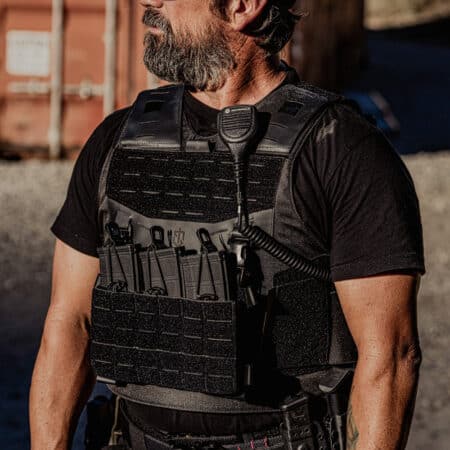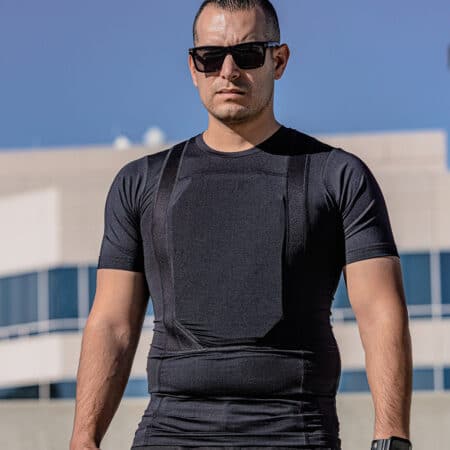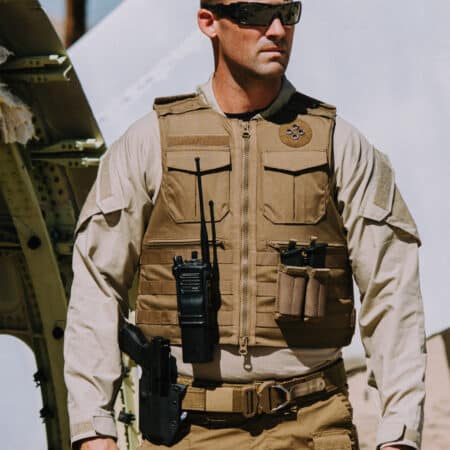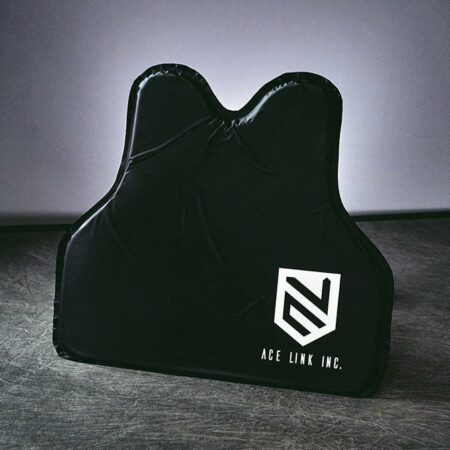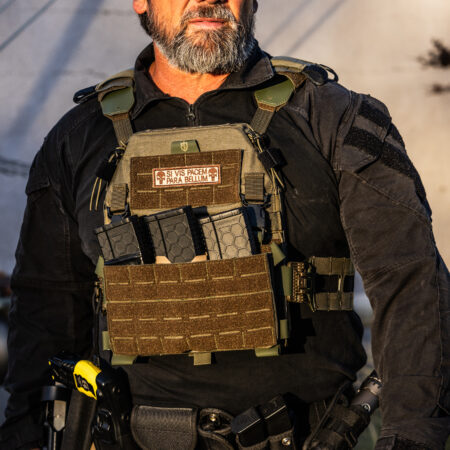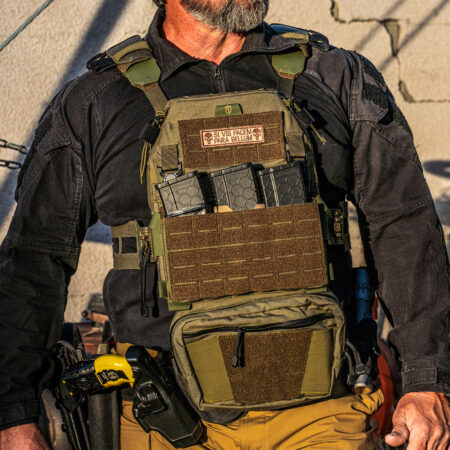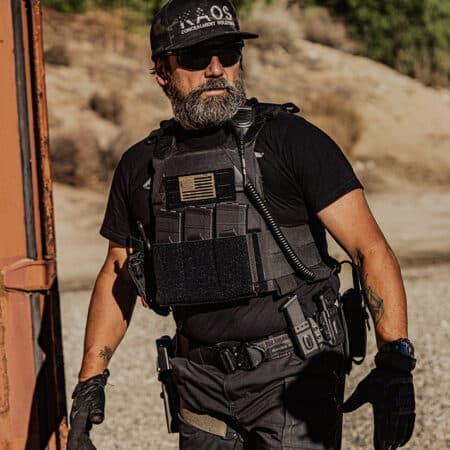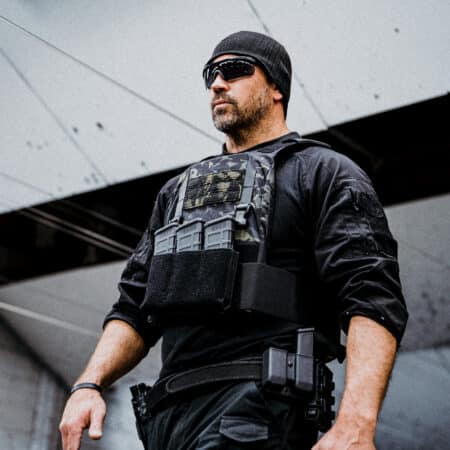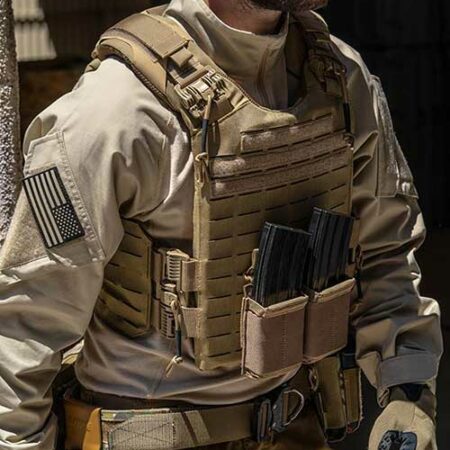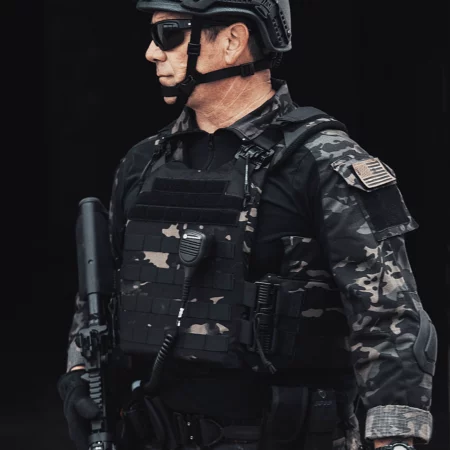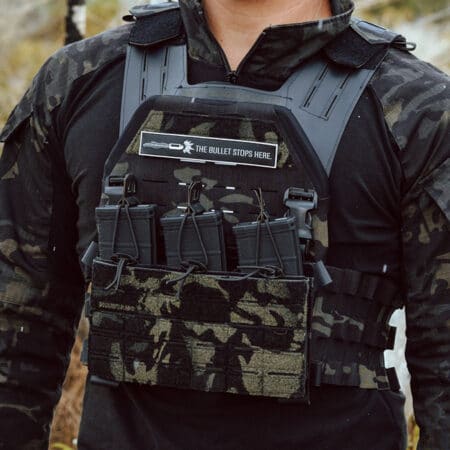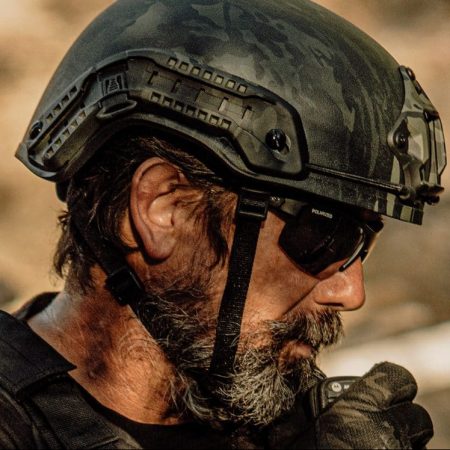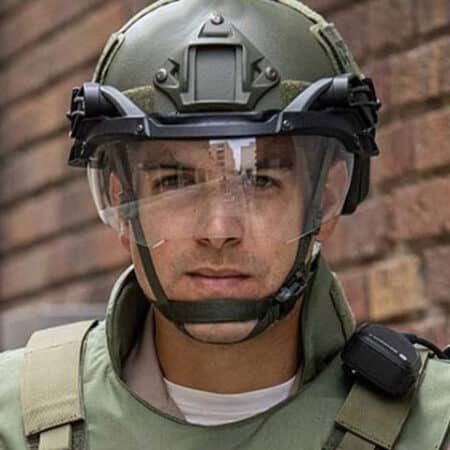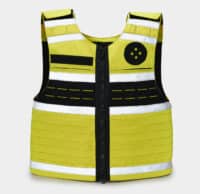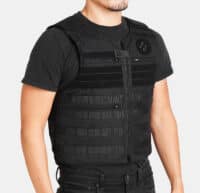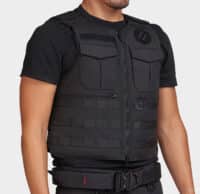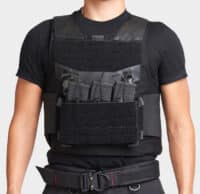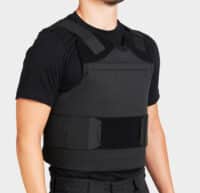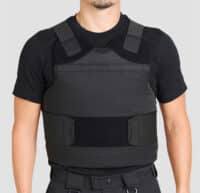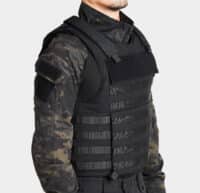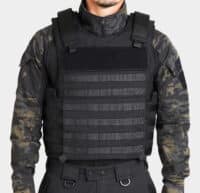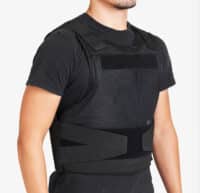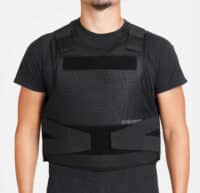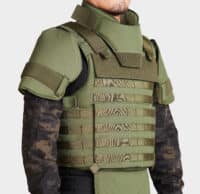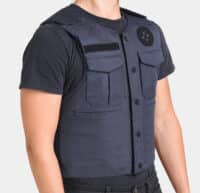
Body armor
BULLETPROOF VESTS BODY ARMOR
-
SALE: - 10%

high-vis
OVERT BULLETPROOF VEST HIGH-VIS, EMS, SECURITYFrom: $366.00 -
SALE: - 17%

Patrol LC
OVERT BULLETPROOF VEST LAW ENFORCMENT, SECURITYFrom: $321.00 -
SALE: - 17%

Patrol
OVERT BULLETPROOF VEST LAW ENFORCMENT, SECURITYFrom: $321.00 -
SALE: - 17%

Livewire
ON DUTY BULLETPROOF VEST PROFESSIONAL UNIFORM LOOKFrom: $321.00 -
SALE: - 30%

Hybrid
Hybrid Bulletproof Vest Concealable & TacticalFrom: $683.00 -
SALE: - 12%

Enhancer
COVERT BULLETPROOF VEST MAXIMUM CONCEALMENTFrom: $505.00 -
SALE: - 10%

Comp-28
TACTICAL BULLETPROOF VEST MODULAR & LOAD BEARINGFrom: $386.00 -
SALE: - 10%

Spectre
CONCEALABLE BULLETPROOF VEST Maximum ConcealmentFrom: $347.00 -
SALE: - 10%

M.S.O.V
TACTICAL BULLETPROOF VEST SPECIAL OPERATION VESTFrom: $474.00 -
SALE: - 10%

Primer
ON DUTY BULLETPROOF VEST PROFESSIONAL UNIFORM APPEARANCEFrom: $366.00 -

Bulletproof Shirt
COVERT BULLETPROOF VEST CONCEALABLE ARMOR T-SHIRTFrom: $278.96
-
high-vis
OVERT BULLETPROOF VEST HIGH-VIS, EMS, SECURITY
-
Patrol LC
OVERT BULLETPROOF VEST LAW ENFORCMENT, SECURITY
-
Patrol
OVERT BULLETPROOF VEST LAW ENFORCMENT, SECURITY
-
Livewire
ON DUTY BULLETPROOF VEST PROFESSIONAL UNIFORM LOOK
-
Hybrid
Hybrid Bulletproof Vest Concealable & Tactical
-
Enhancer
COVERT BULLETPROOF VEST MAXIMUM CONCEALMENT
-
Comp-28
TACTICAL BULLETPROOF VEST MODULAR & LOAD BEARING
-
Spectre
CONCEALABLE BULLETPROOF VEST Maximum Concealment
-
M.S.O.V
TACTICAL BULLETPROOF VEST SPECIAL OPERATION VEST
-
Primer
ON DUTY BULLETPROOF VEST PROFESSIONAL UNIFORM APPEARANCE
-
Bulletproof Shirt
COVERT BULLETPROOF VEST CONCEALABLE ARMOR T-SHIRT
Soft Armor Comparison
A comparison between : Standard , Flexcore , & Anti-Stab Vests:
Standard Soft Armor provides comprehensive Level IIIA ballistic protection. It is tested to meet NIJ.06 standards at an independent laboratory, stops dozens of various rounds up to .44 Magnum, and the armor panels are manufactured in the USA.
Flexcore Soft Armor provides Level IIIA protection while being ultra-flexible and lightweight, utilizing a proprietary technology called Aramid Flexcore™. It is only 0.23” (5.8mm) thick, thinner than an average smartphone, and still stops multiple .44 Magnum rounds. Tested at an independent laboratory to meet NIJ.06 standards and manufactured in the USA.
Anti-Stab Soft Armor provides NIJ.06 Level IIIA and NIJ.0115 Stab1 protection. This is multi-threat stab-proof protection that stops handgun, spike, slash, and stab threats. Its dual protection structure will stop multiple rounds of various handgun threats up to .44 magnum, as well as spike and edged blades of up to 36 joules of impact energy.
BODY ARMOR GUIDE
How to use Bulletproof Vest?
Body armor and bullet proof vests have saved the lives of countless police officers, soldiers, paramedics, and civilians all over the world. Therefore, the importance of owning high-quality body armor can not be denied.
Wearing your bulletproof vest the right way is very important, and could make the difference between life and death. Though people in the military, and law enforcement are training on how to wear bulletproof vests and hard body armor, this training is not readily available for civilians.
Therefore, before you purchase body armor, you need to know how to wear it, and in this post, we are going to go into detail about how you should wear different kinds of body armor. Stay tuned to learn more.
How to wear soft armor bulletproof vests?
So, first and foremost, you need to get the right size bulletproof vest. If it is too small, it will be too tight and won’t give you complete ballistic protection, on the other hand, if it is too big, it will be loose, move around, and affect your shooting abilities as well. Therefore, try on multiple sizes, to see which fits best.
Once you have the right size, you need to know how to assemble and disassemble your bulletproof vests. Though most of the time, you will get your vest pre-assembled when you buy it, knowing how to disassemble can help you make small adjustments that really help the vest fit your body.
Another thing to make sure of is that you put the soft armor inserts into the vest the right way. Make sure that the strike face is facing outwards, whereas the body side is inside. As far as fit is concerned, there is a simple rule; your Aramid vest should be snug but not too tight to restrict breathing and movement. The bottom end of your vest should be a couple of inches or so above your belly button, when you sit down, this way it won’t get in the way of your pistol holster and cover all of your vital organs.
How to wear a plate carrier ?
Through bulletproof vests are ideal for stopping handgun rounds threats, to get ballistic protection from rifle rounds, you need to you hard armor plates, and to carry them, you also need a plate carrier.
Now, unlike bulletproof vests, which are sized according to body types, plate carriers are sized according to the ballistic panels they can carry. So to get the right size, you need to know which size plate you will need. You need a plate that is large enough to cover all of your vital organs but is still small enough that it doesn’t restrict your maneuverability.
Typically, armor plates come in four sizes, Small plates (8”x10”) are ideal for people with a smaller frame. Medium plates (10”x12”) and are suitable for most males with an average height and stature. Large plates are 10”x13” in size, whereas XL plates are 11”x14”
Once you have got the right size, you need to wear it properly, so that it covers all your vital organs. A plate carrier usually does not provide as much coverage as a bulletproof vest, therefore, proper placing is even more essential.
The sides of your plate should be just inside your nipples, whereas, in regards to height, it should cover your body from the top of the breastbone down to a couple of inches above the belly button when you are sitting down.
What is The life span of Body armor?
Most people might find this weird, but ballistic armor also comes with an expiration date. Even if your bullet proof vest is not shot, its ballistic protection can decrease over time. There are several factors that affect the longevity of a bullet proof vest, like how it is stored, how it is worn, and how it is maintained.
How long do bullet proof vests last?
Let’s start with soft body armor. These bullet proof aramid based vests, which are regularly used by Law enforcement officers, deteriorate more quickly than armor plates. Most NIJ compliant bulletproof vests will last a minimum of five years, however, many factors can decrease this time as well.
You see, soft body armor is made from tightly woven Aramid fibers. Therefore, when you wear your bulletproof vest and move around, these fibers are stretched, and over time they can loosen a bit at some points, which could allow a bullet to pass through.
Moreover, the aramid fibers are also affected by heat, and moisture, therefore, if you are wearing your vest on your job, and spending time in the sun, your armor panels will get heated, and you will sweat too, which can affect the armor over time. Moreover, when you wear and take off your bulletproof vest every day, it can crease at certain points which is also a cause of long-term deterioration.
This is why active law enforcement officers, paramedics, and security guards need to replace their ballistic vests more often than someone who has them properly stored at home only to be used occasionally at the range, or in a self-defense situation.
Lastly, I feel that it goes without saying that if your ballistic vests shot once, you shouldn’t use it anymore, and get a new one.
How long do hard armor plates last?
Hard ballistic plates are designed to protect you against rifle rounds, and though they do have a longer lifespan than soft body armor, eventually they will have to be replaced as well. The lifespan of hard ballistic plates depends a lot upon the kind of material used to make it.
What is the Life-span of steel plates?
Steal armor plates last the longest, however, they do have some drawbacks. Firstly, they are quite heavy. Secondly, they are prone to the problem of spalling. Spalling is the issue when bullets are deflected after hitting a steel armor plate. The fragments of the bullet can be deflected towards the person wearing the body armor, and the people around them. To fix this issue, most stable armor plates have a rubber coating, which catches these fragments.
Though the steel plate itself can last for up to 20 years, the rubber coating can deteriorate, and make the plates less safe. Many people believe that a steel plate can get shot multiple times with small calibers and still be used, however, even pistol calibers can damage the rubber coating, thus making the steel plate unfit to use.
Therefore, if it isn’t shot, a steel armor plate will last you about 10-12 years.
What is the Life-span of ceramic plates?
Now, let’s talk about ceramic armor, though it is lighter and doesn’t have the spalling issue, it too has some drawbacks. Firstly, it has a short shelf life, which is usually only 5 years, if the plate is not shot.
What is the Life-span of UHMWPE plates?
These days, more and more body armor manufacturers are starting to use Ultra High Molecular Weight Polyethylene (UHMWPE) to make body armor, which offers extremely lightweight protection, and lasts the longest time as well, however, it can be slightly more expensive than ceramic and steel body armor. Still, since you won’t have to replace it every five years or so, it is still better value for your money.
PE armor works by using the heat of the bullet, and melting around it, therefore, stopping penetration and deflected fragments as well.
On average, UHMWPE body armor plates can have a shelf life of up to 10 years, however, if the plate is shot, you should obviously replace it. That is the same for all kinds of hard body armor plates.
Lastly, another important thing to remember is that no matter which plates you are using, your plate carrier can also get damaged over time, especially if you are wearing your armor regularly, therefore, keep an eye out for any tears in the seams of your plate carrier as well.
How can you increase the lifespan of your bullet proof vests?
The most critical thing that affects the lifespan and longevity of your body armor is how it is maintained. So, here are some quick tips to make sure that you get the most out of your body armor.
Don’t get your bullet proof vest wet.
This is critical in the case of soft ballistic armor and concealable armor. Water can seriously damage the integrity of soft armor. As the tightly woven Aramid fibers get wet, they begin to relax, which can lead to gaps and an overall weave structure. However, one thing that hardly anyone talks about is how do you clean your ballistic vest.
If you are wearing your vest on duty every day, it is going to get dirty, moreover, you are going to sweat, and your bulletproof vest will start to smell, but how do you wash it if you can’t get it wet.
Well, the main thing to remember is that your soft armor ballistic panels should not get wet, but you can wash the vest. Therefore, remove the ballistic panels from your vest, trying not to fold them too much. Then you can wash the carrier in the washing machine. The same goes for the carrier of concealable armor.
The ballistic panels are usually covered with a moisture-wicking cover, so you can simply use a damp towel to clean them if it is completely necessary. Moreover, make sure that your carrier is completely dried before you put the armor inserts back in it.
Moisture can also damage hard armor plates, especially steel armor, which may start to rust. The water may also damage the adhesive between the steel plates and the anti-spalling rubber coating.
Try to maintain your body weight.
Another common factor that might impact the fit and even integrity of your body armor is your weight and body type. If you gain weight and don’t readjust your bulletproof vest, the tightness can start to wear on the armor, conversely, if you lose weight, your armor may start to the crease, both of which are bad for its longevity, and fit.
Therefore, try to maintain your weight, and if there are any changes, make sure to readjust your vest.
Store your armor properly.
The way you store your armor also has a major impact on its longevity. When dealing with Aramid armor, you should store it in a dry place, since moisture is the number one enemy of tightly woven Aramid fibers like Aramid.
High temperatures can also be damaging to soft armor vests therefore, make sure that the storage spot for your armor is not too hot.
Lastly, it is important that you store your armor on a plain and flat surface, and don’t put any extra weight on top of it. Ideally, you should keep your bullet proof vests hanging.
Hard armor plates and plate carriers should also be stored in dry places since moisture can damage steel plates, and high heat can also be bad for PE armor plates.
Understanding the risks of using expired body armor.
Many people who use body armor say that it is still usable after the expiry date, and it won’t degrade immediately after the expiration date. Well to some extent they may be right, but it is important that you understand the risk.
Like food, in the case of armor as well, expiration dates are more like best before dates. Though the armor may not be at its best after this date, it may still be functional for some time. However, its reliability and ballistic protection will start to decrease quickly after this.
If you don’t wear your armor frequently, and you have stored it in the ideal settings according to the instructions of the manufacturer, it may even be good for a couple of years after the expiry date. However, if you rely on your Aramid vest to provide you with ballistic protection every day on your duty as a police officer or security guard, do you really want to take that risk?
Reliability is essential for body armor, especially since it could be the only thing saving you from severe injuries or death. If you are wearing expired body armor, it may even stop smaller calibers but bigger rounds that the Aramid vest is actually rated for might go through.
For instance, a level IIIA protection vest, like the ones that law enforcement officers wear under their uniform, is rated to stop up to a .44 magnum. After it has deteriorated over time, it may still be bullet-resistant and stop 9mm rounds, but what if you get hit by a .44 magnum handgun rounds at close range, can you be absolutely sure that the armor will save you? Frankly, I wouldn’t want to take that risk, especially if I have to rely on armor for personal protection every day.
Therefore, id suggests that you follow the instructions of the manufacturer, and replace your ballistic vest or plates as soon as you can after the expiration date. A few hundred bucks for a new vest is nothing compared to the value of your life, and the value you have for your family and your loved ones.
Here is link to our Armor Guide Article about how take good care of your body armor.
 go back
go back
YOUR SHOPPING CART
your cart is empty





